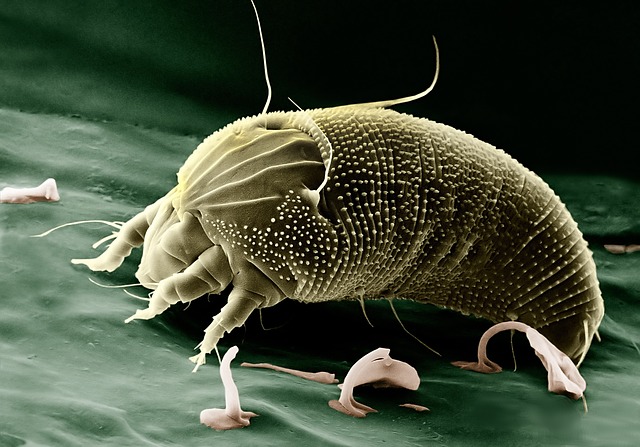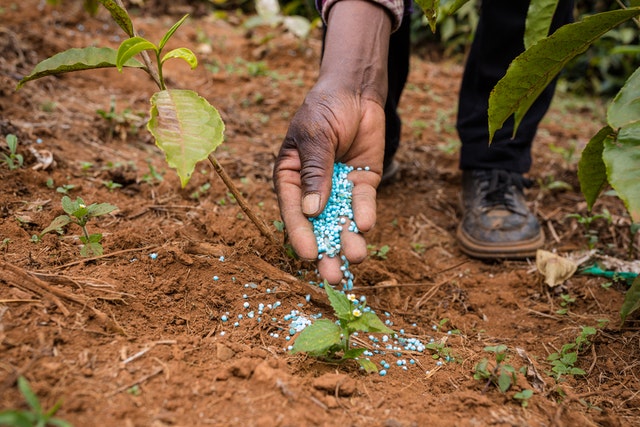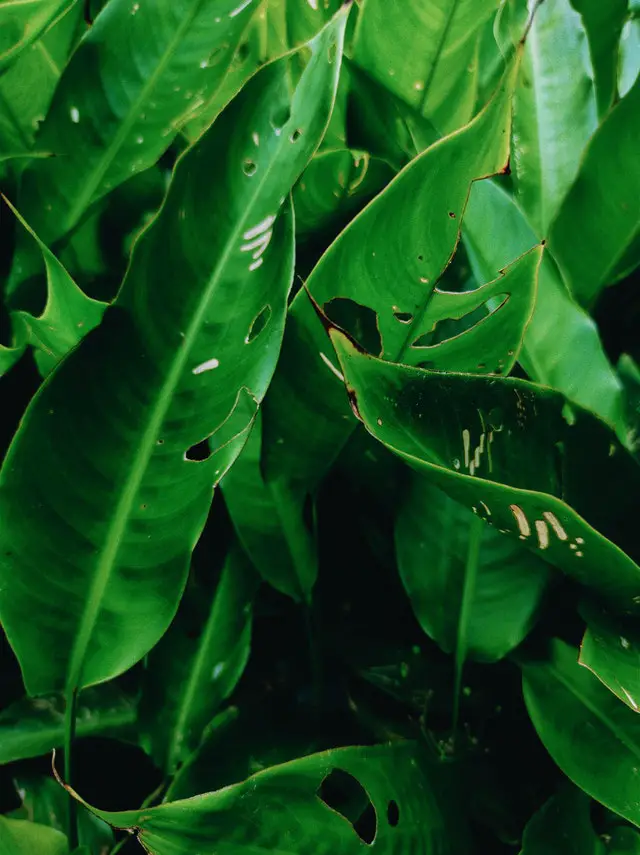If you are noticing holes in pothos leaves, you might be wondering what is going on and what the commonest cause of this issue is. Pothos plants can be seriously damaged if their leaves have holes in them, so make sure you look for a solution, or your plant may die.
It’s also important to take into account the environment surrounding your pothos plants, as improper care and incorrect placement can also lead to holes in the leaves
Pothos plants can develop leaves for a few different reasons, including insect infestations, diseases, and excessive fertilizer. They may also produce holes if they get too much sun. All of these issues can be fixed once you have identified the cause.
Holes In Pothos Leaves
Holes in pothos leaves are not a good sign, and they indicate that something could be seriously wrong with your plant. If your pothos plant has just one or two holes in its leaves, it may not be anything serious, but having lots of holes is a worrying sign that the plant is sick or something is attacking it.
There are quite a lot of things that can cause holes to appear in your plant’s leaves, and if you see these, you should first check for insects attacking the foliage. If there are no insects, you should check for diseases instead, and you should also think about when you last fertilized your plant and whether it may have been given too much food.
Next, check whether your plant is getting burnt by the sun, and if it is too close to a window. If you find any of these things have occurred, you will need to take action to save the plant.
Problem 1: Insects

Insects are a big problem for pothos plants, and if your plant is being attacked by pests, it is likely to get holes in the leaves. The insects will chew at the foliage, tearing holes in it. Of course, not all pests do this, but one of the common pothos predators does – the leaf mining fly.
These flies are the most likely culprit if you are seeing holes in the leaves of your pothos, so you should look for them before you do anything else. Leaf mining flies devour the foliage, chewing holes in all the leaves, and robbing the plant of its ability to make energy and photosynthesize.
They often leave thin tracks of brown tissue where they have chewed, swirling across the leaves in crazy patterns.
You should check for these pesky insects on the undersides of the leaves. They will stress your plant out and they breed fast, so they are bound to spread to your other plants too.
According to GardeningKnowHow, you can usually get rid of leaf mining flies by spraying your plant with a general insecticide. This will kill the flies and allow your pothos to recover. It will sometimes take a few treatments in order to be effective, however.
Problem 2: Diseases
Sometimes, your pothos leaf holes will be due to a nasty disease called spot disease. This attacks multiple leaves and will spread across the plant, leaving brown, decaying tissue in its wake. It usually starts out as tiny marks on the leaves, but if it is not treated, these will spread and take over the whole leaf.
It can cause splitting at the ends and even holes in the middles of the leaves if it is particularly bad. You can sometimes treat it by applying neem oil to the leaves and removing any badly affected leaves. Keep your plant isolated so the disease cannot spread.
Another potential issue is called shot hole disease, and as the name suggests, this makes holes that look like gunshots in the leaves. It usually affects young leaves, and although it is relatively rare to see it on pothos plants, you should still look out for it.
This tends to be a bigger issue in wet environments, so if you constantly splash your pothos plant’s leaves when you are watering it, you’re more likely to see this disease appear. If you manage to keep your pothos dry, it should be pretty safe from shot hole disease.
Problem 3: Excess Fertilizer

It may not surprise you that feeding your plant too much can cause this sort of issue too. This is because fertilizer contains high levels of salt, and the salt will build up in the soil and affect the pH levels. This in turn will cause burning on your pothos plant’s leaves.
This damage is permanent, and the holes will continue to form for as long as your plant has too much fertilizer around its roots. Solid nitrogen fertilizers are particularly likely to cause this sort of issue, so avoid these.
Make sure you dilute fertilizer before you add it to the plant’s container, and only fertilize the pothos when it seems to be growing slowly. It shouldn’t need lots of food in order to be happy.
If you have fertilized your pothos plant too heavily, put your plant in the sink and use plenty of rainwater to flush the pot out. This will help to remove the salts from the soil, and balance the pH again.
Problem 4: Too Much Sunlight
If your plant is getting a lot of sunlight, it is likely that its leaves will burn. Pothos are jungle plants, and they prefer partial shade with minimal direct sun. Strong sunlight will inevitably create brown spots on the leaves, and if these are big enough, they will gradually turn into holes.
Excessive sunlight and burning will leave your plant stressed and vulnerable to damage by pests and diseases, so make sure you move your pothos if it is at risk of burning. If you can’t relocate it, put up a thin curtain or piece of fabric to reduce the power of the sun’s rays.
Also see: What to Do With Haworthia Flower Stalk
Summary
Holes in pothos leaves are a sign that something is attacking or damaging your plant, and if that’s the case, you will need to take action to resolve the issue. You can usually do this by removing pests, treating the plant for diseases, or giving it more shelter from the sunlight.
Frequently Asked Questions
Why does my pothos plant have holes?
There are a few different reasons that your pothos may have developed holes in its leaves, and these include things like the plant being attacked by insects, or suffering from a disease. These are the first two things that you should check for. Alternatively, your pothos may be getting too much sun.
If none of these are the case, you should check whether anything could have fallen and damaged the plant, especially if no new holes appear after a few weeks.
What do you do when plants have holes in their leaves?
If you notice plants developing holes in their leaves, you need to take action. Your first step should usually be checking the plant for insects, because these can cause widespread leaf damage. Alternatively, look for common diseases and see whether these are affecting the foliage.
Whatever problem you find, you should treat that problem, and then give your plant the best possible environment while it recovers. It will gradually get established again, and should produce new foliage without holes.
Should I remove leaves with holes?
Whether you need to remove the leaves depends on what has caused the holes to appear. If the holes are due to disease, it is best to remove the affected leaves so that you can limit the spread of the disease. You can also get rid of leaves that have been badly damaged by sunburn or insects. This will encourage your plant to grow new leaves.

Hey, I’m Lisa and I’ve been an avid gardener for over 30 years. I love writing, talking and living in the garden! Feel free to connect with me on my socials below

